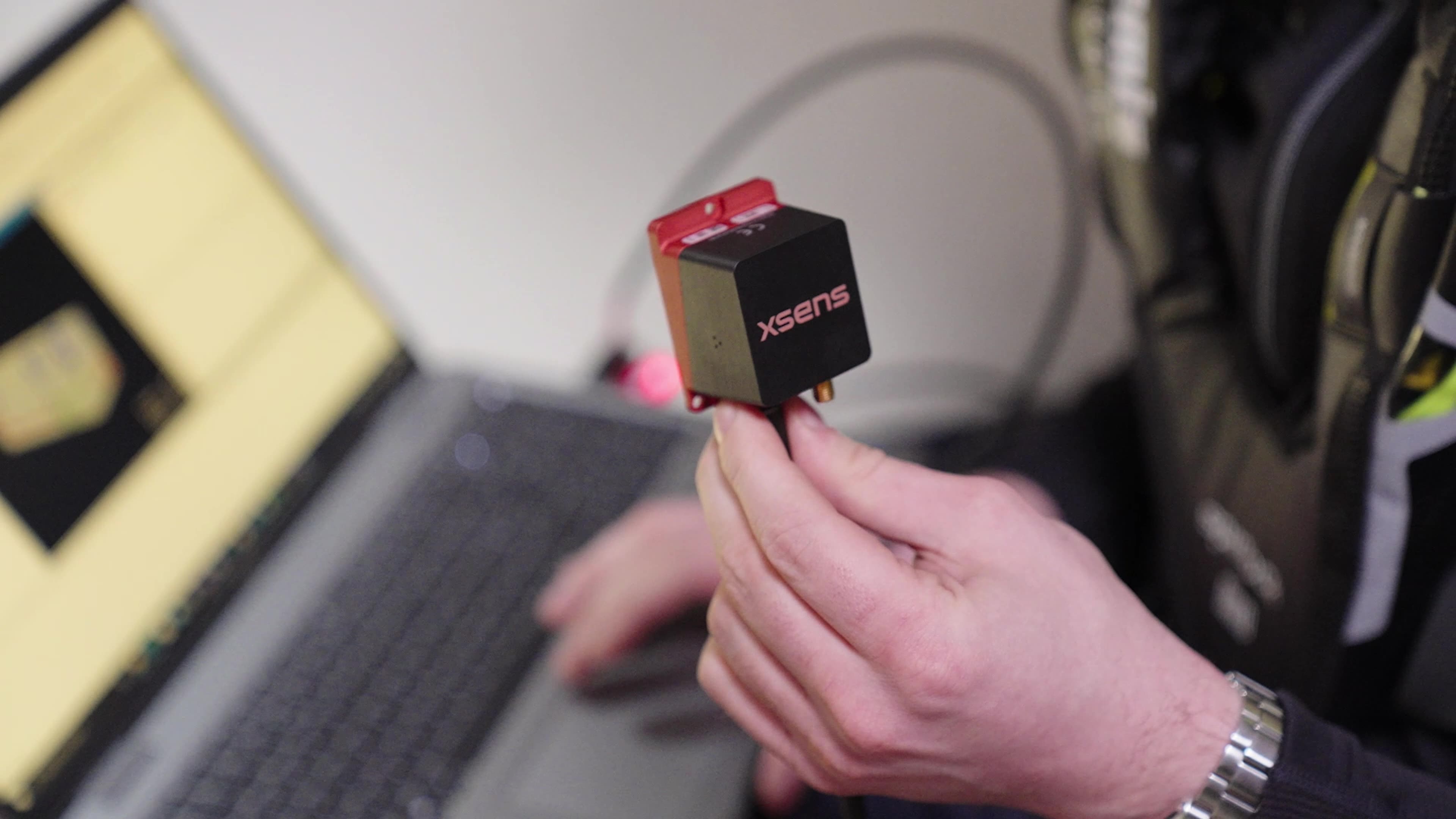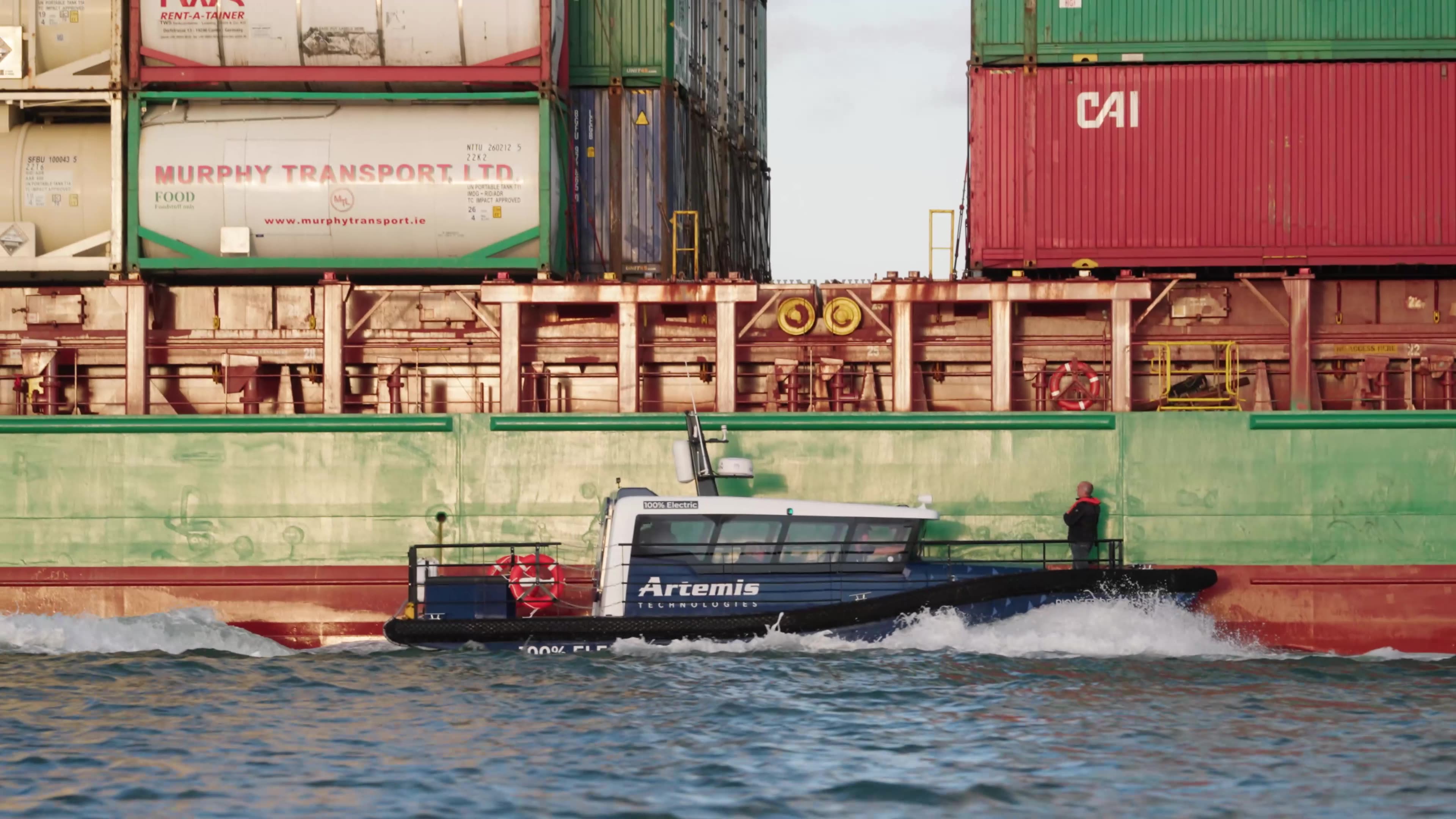



Pilot boats play an essential role in ports worldwide, and Artemis Technologies saw the potential for the application of the eFoiler® system as a viable way of decarbonising pilot operations. The need to prove and test this was paramount.
Over the last two years that is exactly what we have set out to do. There has been significant development of the Artemis EF-12 Pilot boat, starting from our feasibility study to most recently the sea trials conducting contact manoeuvres alongside a variety of ships in Cork.
Extensive research, collaboration with ports, harbour masters and pilots and testing has encompassed our dedication to provide a pilot boat that not only performs, but also brings added benefits, to both the everyday users of the vessel and for the environment.

The study sought to determine whether a 100% electric foiling pilot vessel provides a technical and economically viable solution to the problem of decarbonising pilot vessel operations. This study received funding awarded by the Department for Transport and Innovate UK’s Clean Maritime Demonstration Competition along with our project partners, Belfast Harbour Commissioners.
Data was collected by an inertial measurement unit (IMU) installed on Belfast Harbour’s pilot boat. This provided the technical team with high fidelity information such as roll angle, yaw rates, accelerations and different swells and sea states. This enabled us to accurately model a pilot boat’s operational duty cycle in a digital environment, along with integrating the data with the performance data we have gathered from testing our 12 metre Artemis eFoiler® Workboat and its sistership in developing an Artemis eFoiler® pilot boat simulation.
Artemis Technologies recognises and respects the high risks that the pilot boarding manoeuvres come with. Replicating the scenario in the simulator, a digital twin of the Artemis EF-12 Pilot first, before testing it on the water, was key to our feasibility and design process as it provided a safe, controlled and repeatable environment to trial the design and the manoeuvres. This included our project partners, Belfast Harbour. Their pilots and coxswains were able to experience this virtual scenario of the Artemis EF-12 Pilot boat and provided feedback from all these simulated test runs.
The feasibility study was successful, with the technology demonstrating considerable improvements in the speed of operations, Total Cost of Operation (TCO), slow speed stability, and subsequently safety during pilot transfer.
The goal of these sea trials was to validate the Artemis EF-12 Pilot simulations as part of the feasibility study and collect data from the Artemis EF-12 Workboat carrying out contact manoeuvres alongside a variety of ships.
During our testing period, facilitated by the Port of Cork, we collected the data of the electric foiling vessel, successfully conducting 15 ship contacts with four different vessel types ranging from 90-158 metres.
There were three key events within the manoeuvre that we wanted to focus on:

The Artemis eFoiler® successfully foiled through the wake field and keel water. Once close to the boarding position the vessel smoothly lowered into displacement mode ready to make contact with the ship.

The vessel was able to create a stable and solid contact with the ship between a speed range of 6-10 knots due to its ability to readily control the heel and yaw angle.
The heel angle of the foiling platform remained steady between 0-5 degrees, making it a very stable platform. During a transfer speed of 8-10 knots and a yaw angle of 5-10 degrees we achieved close to 0-degree heel.
The high-level of contact stability achieved was enabled by the side force from the front foil pressing the bow into the target ship. This force was highly controllable due to the ability to change the yaw angle via the rudder.
The pivot point on the bow, close to the front foil, was used to deliver successful break aways. The rudder angle was adjusted and gradually rotated away until parallel to the ship when side force was no longer created. With the front foil in vertical position this made the Artemis eFoiler® vessel stable in yaw. Once the rudder angle went through zero, the front foil created side force, effectively pulling the bow away from the ship while rotating around the pivot point.
The water flowing over the foils provided extra momentum and helped give the smooth break away around the pivot point.
When we compared the sea trial data collected via the onboard IMU (Inertial Measurement Unit) with our simulation and CFD modelling data, the results were very closely matched. The Artemis eFoiler® achieved within 4% of what the simulations predicted in terms of roll and stability during interaction with the ships. This provided us with positive confirmation of the impact and benefits of using our advanced simulation and digital twin capabilities to predict performance as an integral step in the testing process.
Following these successful trials we are moving confidently ahead to ensure the Artemis EF-12 Pilot design is optimised for the best performance, stability and safety – both in general transit operations and the transfer manoeuvre itself. The data collected during the sea trials has provided a greater understanding of the vessel performance and fed back into hull and fender design decisions.
Sea trials will continue to take place to increase the data we have to test the vessel in a range of scenarios, positions and sea states.
We continue to collaborate closely with our partners – ports, harbour masters and pilots throughout this design and build process. This is an essential part of Artemis Technologies’ commitment to ensuring a user-led approach sits at the core of decision-making. Ultimately to deliver on our mission to deliver a reliable, high-performing and safe pilot boat that will also help decarbonise port operations.


